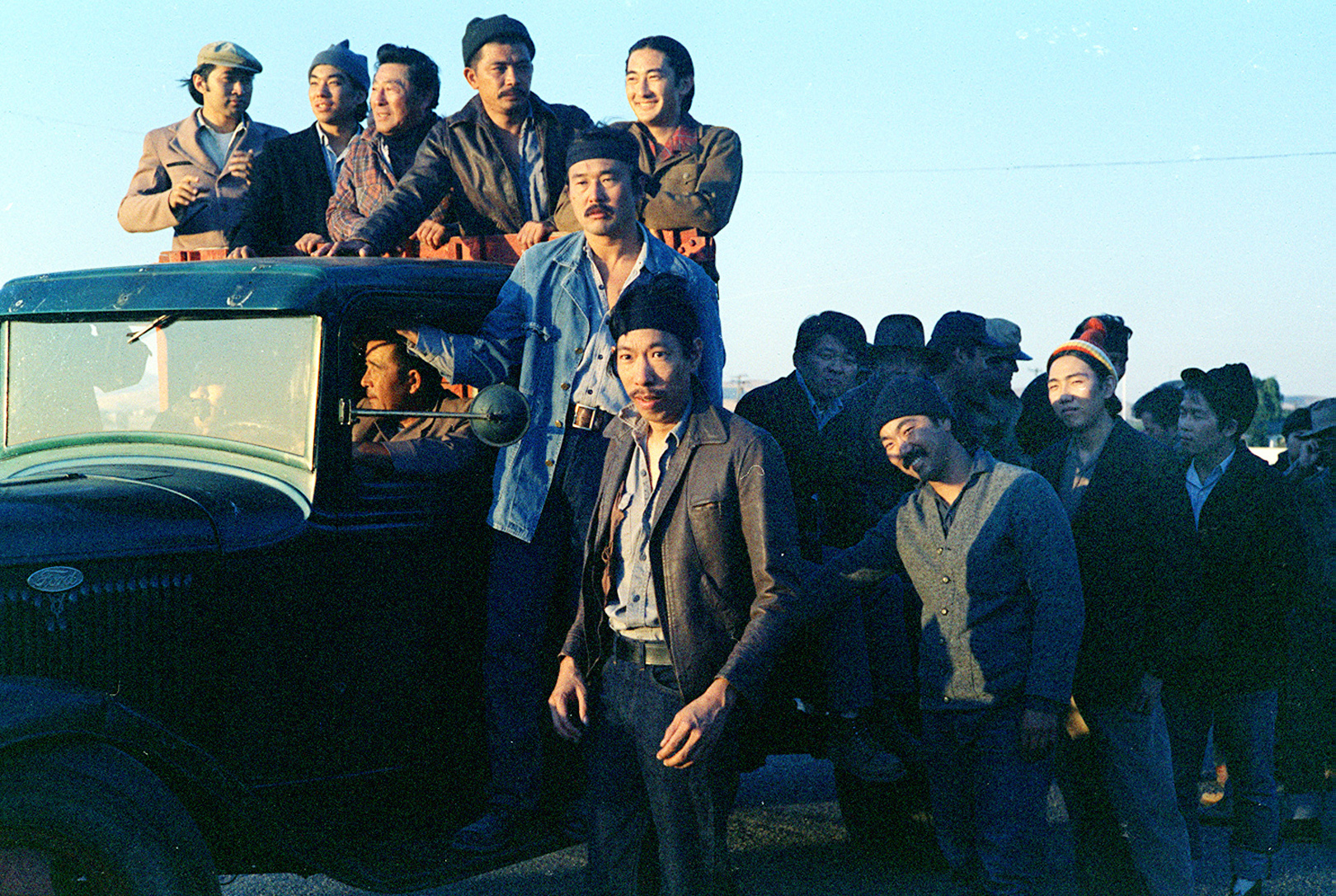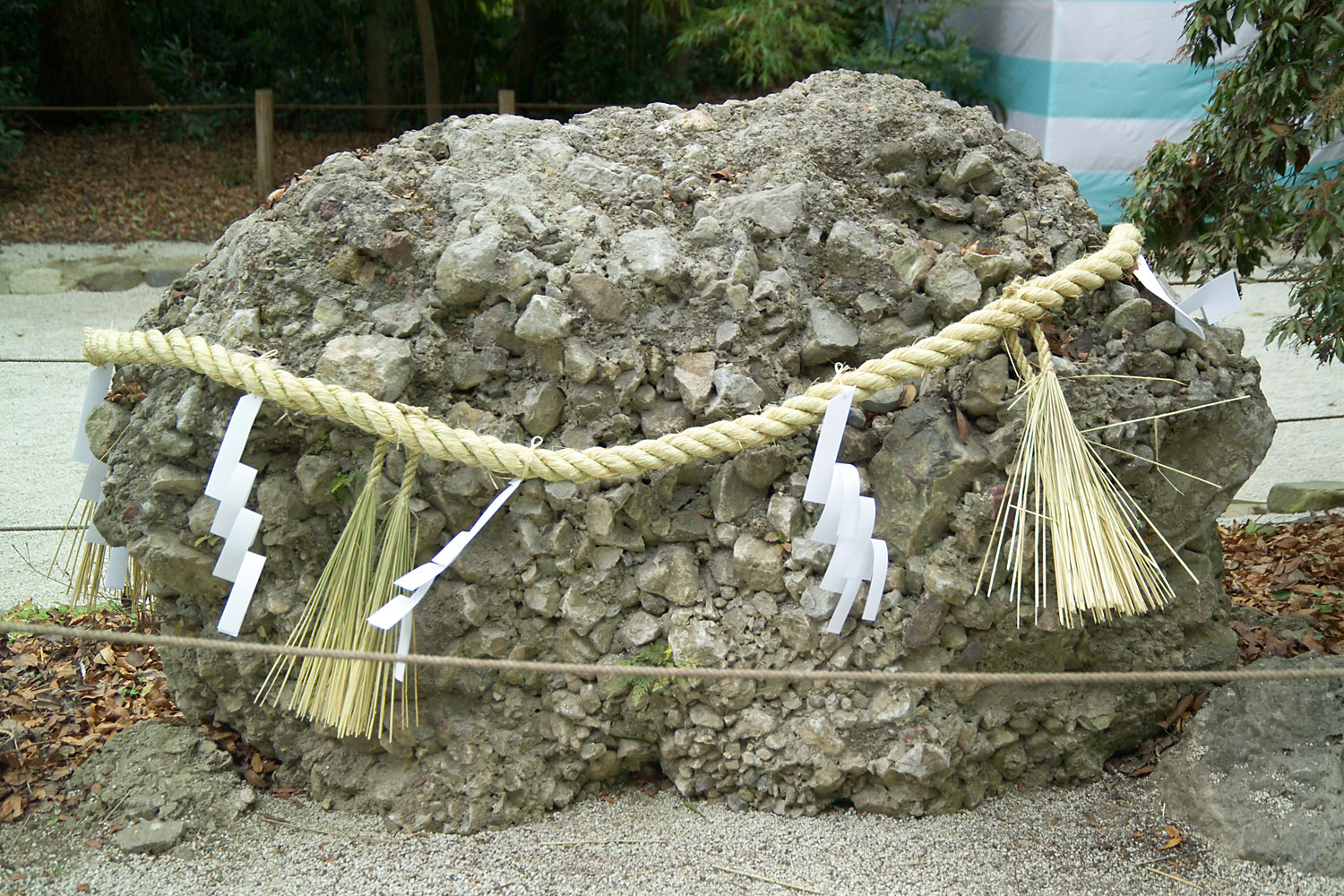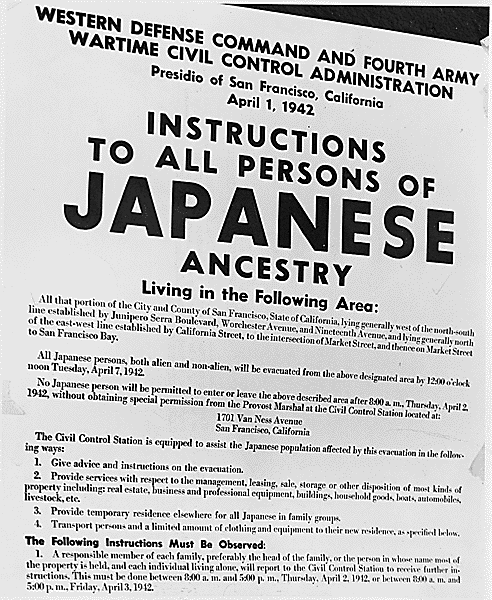|
Farewell To Manzanar
''Farewell to Manzanar'' is a memoir published in 1973 by Jeanne Wakatsuki Houston and James D. Houston. The book describes the experiences of Jeanne Wakatsuki and her family before, during, and following their relocation to the Manzanar internment camp due to the United States government's internment of Japanese Americans during World War II. It was adapted into a made-for-TV movie in 1976 starring Yuki Shimoda, Nobu McCarthy, James Saito, Pat Morita, and Mako. Synopsis Jeanne Wakatsuki (the book's narrator) is a ''Nisei'' (child of a Japanese immigrant). At age seven, Wakatsuki—a native-born American citizen—and her family were living on Ocean Park (near San Pedro, California). They have to move to Terminal Island, where her father, a fisherman who owned two boats, was arrested by the FBI following the Pearl Harbor attack on December 7, 1941. Soon after, she and the rest of her family were imprisoned at Manzanar (an American internment camp), where 11,070 American ... [...More Info...] [...Related Items...] OR: [Wikipedia] [Google] [Baidu] |
Manzanar
Manzanar is the site of one of ten American concentration camps, where more than 120,000 Japanese Americans were incarcerated during World War II from March 1942 to November 1945. Although it had over 10,000 inmates at its peak, it was one of the smaller internment camps. It is located at the foot of the Sierra Nevada mountains in California's Owens Valley, between the towns of Lone Pine to the south and Independence to the north, approximately north of Los Angeles. Manzanar means "apple orchard" in Spanish. The Manzanar National Historic Site, which preserves and interprets the legacy of Japanese American incarceration in the United States, was identified by the United States National Park Service as the best-preserved of the ten former camp sites. The first Japanese Americans arrived at Manzanar in March 1942, just one month after President Franklin D. Roosevelt signed Executive Order 9066, to build the camp their families would be staying in. Manzanar was in operatio ... [...More Info...] [...Related Items...] OR: [Wikipedia] [Google] [Baidu] |
Jeanne Wakatsuki Houston
Jeanne Toyo Wakatsuki Houston (September 26, 1934 – December 21, 2024) was an American writer. Her writings primarily focused on ethnic identity formation in the United States of America. She is best known for her autobiographical novel ''Farewell to Manzanar'' that narrates her personal experiences in World War II incarceration camps. The book has been credited with sharing the story of the Japanese American incarceration with generations of young people. Life and career Jeanne Toyo Wakatsuki was born in Inglewood, California, on September 26, 1934. She was the youngest of four boys and six girls in the Wakatsuki family. For the first seven years she experienced a normal childhood. She lived in Los Angeles, California until 1942 when President Roosevelt signed Executive Order 9066, causing her and her family to be incarcerated. She and her family were forced to leave their home and be taken to Manzanar. They were transported in large greyhound buses from Los Angeles to Manz ... [...More Info...] [...Related Items...] OR: [Wikipedia] [Google] [Baidu] |
Pearl Harbor Attack
The attack on Pearl HarborAlso known as the Battle of Pearl Harbor was a surprise military strike by the Empire of Japan on the United States Pacific Fleet at its naval base at Pearl Harbor on Oahu, Hawaii, on December 7, 1941. At the time, the U.S. was a neutral country in World War II. The air raid on Pearl Harbor, which was launched from aircraft carriers, resulted in the U.S. entering the war on the side of the Allies on the day following the attack. The Japanese military leadership referred to the attack as the Hawaii Operation and Operation AI, and as Operation Z during its planning. The attack on Pearl Harbor was preceded by months of negotiations between the U.S. and Japan over the future of the Pacific. Japanese demands included that the U.S. end its sanctions against Japan, cease aiding China in the Second Sino-Japanese War, and allow Japan to access the resources of the Dutch East Indies. Japan sent out its naval attack group on November 26, 1941, just prior ... [...More Info...] [...Related Items...] OR: [Wikipedia] [Google] [Baidu] |
Public Housing
Public housing, also known as social housing, refers to Subsidized housing, subsidized or affordable housing provided in buildings that are usually owned and managed by local government, central government, nonprofit organizations or a combination thereof. The details, terminology, definitions of poverty, and other criteria for allocation may vary within different contexts, but the right to renting, rent such a home is generally rationed through some form of means-testing or through administrative measures of housing needs. One can regard social housing as a potential remedy for housing inequality. Within the OECD, social housing represents an average of 7% of national housing stock (2020), ranging from ~34% in the Netherlands to less than 1% in Colombia. In the United States, public housing developments are classified as housing projects that are owned by a housing authority or a low-income (project-based voucher) property. PBV are a component of a public housing agenc ... [...More Info...] [...Related Items...] OR: [Wikipedia] [Google] [Baidu] |
Hiroshima
is the capital of Hiroshima Prefecture in Japan. , the city had an estimated population of 1,199,391. The gross domestic product (GDP) in Greater Hiroshima, Hiroshima Urban Employment Area, was US$61.3 billion as of 2010. Kazumi Matsui has been the city's mayor since April 2011. The Hiroshima metropolitan area is the second largest urban area in the Chugoku Region of Japan, following the Okayama metropolitan area. Hiroshima was founded in 1589 as a Jōkamachi, castle town on the Ōta River river delta, delta. Following the Meiji Restoration in 1868, Hiroshima rapidly transformed into a major urban center and industrial hub. In 1889, Hiroshima officially gained city status. The city was a center of military activities during the Empire of Japan, imperial era, playing significant roles such as in the First Sino-Japanese War, the Russo-Japanese War, and the two world wars. Hiroshima was the first military target of a nuclear weapon in history. This occurred on August 6, 1945, i ... [...More Info...] [...Related Items...] OR: [Wikipedia] [Google] [Baidu] |
442nd Infantry Regiment (United States)
The 442nd Infantry Regiment was an infantry regiment of the United States Army. The regiment including the 100th Infantry Battalion (United States), 100th Infantry Battalion is best known as the most decorated unit in U.S. military history, and as a fighting unit composed almost entirely of second-generation American soldiers Japanese Americans, of Japanese ancestry (''Nisei'') who fought in World War II. Beginning in 1944, the regiment fought primarily in the European Theatre of World War II, European Theatre, in particular Italian Campaign (World War II), Italy, Operation Dragoon, southern France, and Western Allied invasion of Germany, Germany. The 442nd Regimental Combat Team (RCT) was organized on March 23, 1943, in response to the War Department's call for volunteers to form the segregated Japanese American army combat unit. More than 12,000 Nisei (second-generation Japanese American) volunteers answered the call. Ultimately 2,686 from Hawaii and 1,500 from mainland U.S. ... [...More Info...] [...Related Items...] OR: [Wikipedia] [Google] [Baidu] |
Kimigayo
is the national anthem of Japan. The lyrics are from a ' poem written by an unnamed author in the Heian period (794–1185), and the current melody was chosen in 1880, replacing an unpopular melody composed by John William Fenton in 1869. While the title "Kimigayo" is usually translated as "His Imperial Majesty's Reign,” no official translation of the title or lyrics have been established in law. From 1888 to 1945, ''Kimigayo'' served as the national anthem of the Empire of Japan. When the Empire accepted the Potsdam Declaration and came under Occupation of Japan, Allied occupation, Hirohito, Emperor Shōwa retained the throne, and ''Kimigayo'' remained the de facto national anthem to preserve the Emperor of Japan, Japanese monarchy. The passage of the Act on the National Flag and Anthem in 1999 officially recognized it as both the national and imperial anthem. Etymology "''Kimi''" has been used to indicate the Emperor of Japan or one's lord (i.e., master) since at leas ... [...More Info...] [...Related Items...] OR: [Wikipedia] [Google] [Baidu] |
Samurai
The samurai () were members of the warrior class in Japan. They were originally provincial warriors who came from wealthy landowning families who could afford to train their men to be mounted archers. In the 8th century AD, the imperial court downsized the national army and delegated the security of the countryside to these privately trained warriors. Eventually the samurai clans grew so powerful that they became the ''de facto'' rulers of the country. In the aftermath of the Gempei War (1180-1185), Japan formally passed into military rule with the founding of the first shogunate. The status of samurai became heredity by the mid-eleventh century. By the start of the Edo period, the shogun had disbanded the warrior-monk orders and peasant conscript system, leaving the samurai as the only men in the country permitted to carry weapons at all times. Because the Edo period was a time of peace, many samurai neglected their warrior training and focused on peacetime activities such as a ... [...More Info...] [...Related Items...] OR: [Wikipedia] [Google] [Baidu] |
Fort Lincoln Internment Camp
Fort Lincoln Internment Camp was a military post and internment camp located south of Bismarck, North Dakota, USA, on the east side of the Missouri River. It was first established as a military post in 1895 to replace Fort Yates, following the closure of the original Fort Abraham Lincoln on the west side of the Missouri River in 1891. During the interwar period, it was a training site for units of the Seventh Corps Area. In April 1941, it was converted into an internment camp for enemy aliens (German and Italian seamen who were captured in U.S. waters, despite the U.S. technically remaining neutral at that time).Prairie Public Radio"Fort Lincoln Internment Camp" ''Dakota Datebook'' (retrieved 14 Aug 2010). 800 Italian seamen arrived when the camp opened in April but were soon after transferred to Fort Missoula, Montana.J. Burton, M. Farrell, F. Lord, R. Lord. ''Confinement and Ethnicity: An Overview of World War II Japanese American Relocation Sites''"Department of Justice Inte ... [...More Info...] [...Related Items...] OR: [Wikipedia] [Google] [Baidu] |
Heat Illness
Heat illness is a spectrum of disorders due to increased body temperature. It can be caused by either environmental conditions or by exertion. It includes minor conditions such as heat cramps, heat syncope, and heat exhaustion as well as the more severe condition known as heat stroke. It can affect any or all anatomical systems. Heat illnesses include: heat stroke, heat exhaustion, heat syncope, heat edema, heat cramps, heat rash, heat tetany. Prevention includes avoiding medications that can increase the risk of heat illness, gradual adjustment to heat, and sufficient fluids and electrolytes. Classification A number of heat illnesses exist including: * Heat stroke - Defined by a body temperature of greater than due to environmental heat exposure with lack of thermoregulation. Symptoms include dry skin, rapid, strong pulse and dizziness. * Heat exhaustion - Can be a precursor of heatstroke; the symptoms include heavy sweating, rapid breathing and a fast, weak pulse ... [...More Info...] [...Related Items...] OR: [Wikipedia] [Google] [Baidu] |
Shikata Ga Nai
, , is a Japanese language phrase meaning "it cannot be helped" or "nothing can be done about it". , is an alternative. Cultural associations It has been used to describe the ability of the Japanese people to maintain dignity in the face of an unavoidable tragedy or injustice, particularly when the circumstances are beyond their control, somewhat similar to " c'est la vie" in French or "it is what it is" in English. Historically, it has been applied to situations which masses of Japanese people as a whole have been made to endure during World War II, including the Allied occupation of Japan and the internment of Japanese Americans and Japanese Canadians. In ''Asian American Women: The "Frontiers" Reader'', author Debbie Storrs states: The Japanese phrase ''shikata ga nai'', or "it can't be helped," indicates cultural norms over which one has little control... This notion of suffering in part stems from ''shikata ga nai'': failing to follow cultural norms and social conventio ... [...More Info...] [...Related Items...] OR: [Wikipedia] [Google] [Baidu] |
Executive Order 9066
Executive Order 9066 was a President of the United States, United States presidential executive order signed and issued during World War II by United States president Franklin D. Roosevelt on February 19, 1942. "This order authorized the forced removal of all persons deemed a threat to national security from the West Coast of the United States, West Coast to 'relocation centers' further inland—resulting in the incarceration of Japanese Americans." Two-thirds of the 125,000 people displaced were U.S. citizens. Notably, far more Americans of Asian descent were forcibly interned than Americans of European descent, both in total and as a share of their relative populations. German and Italian Americans who were sent to internment camps during the war were sent under the provisions of Presidential Proclamation 2526 and the Alien Enemy Act, part of the Alien and Sedition Act of 1798. Transcript of Executive Order 9066 The text of Executive Order 9066 was as follows: Backgrou ... [...More Info...] [...Related Items...] OR: [Wikipedia] [Google] [Baidu] |







